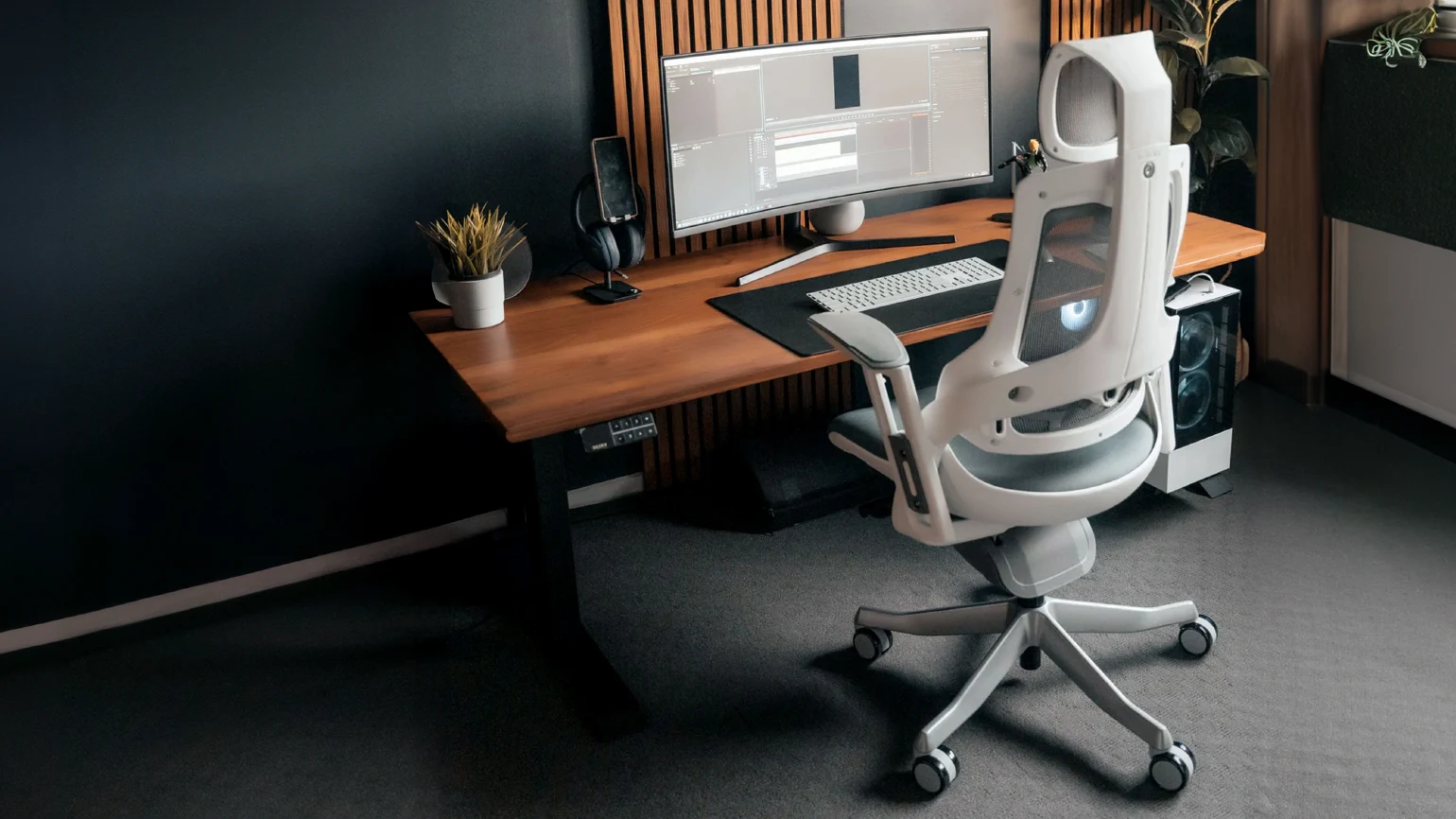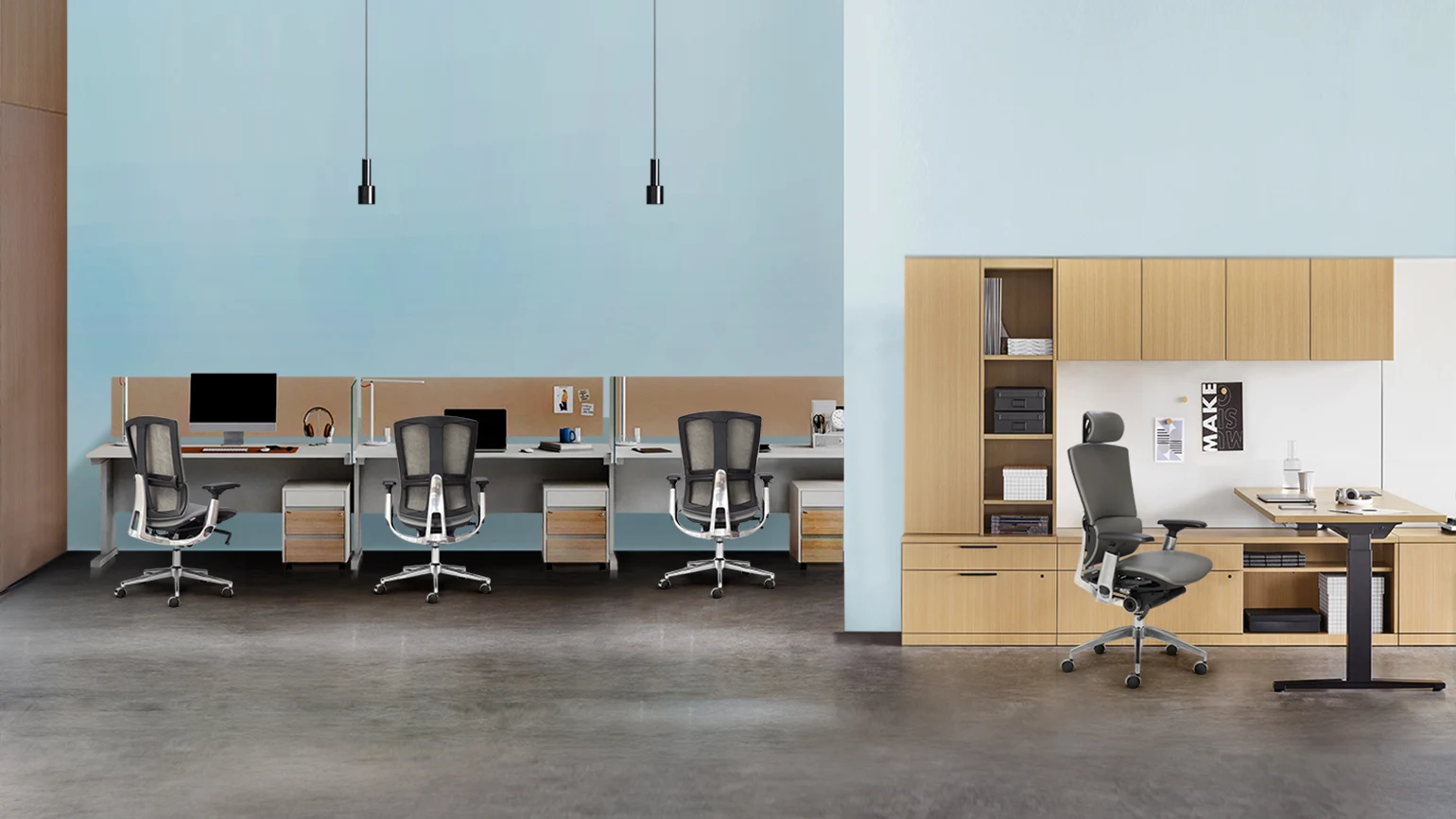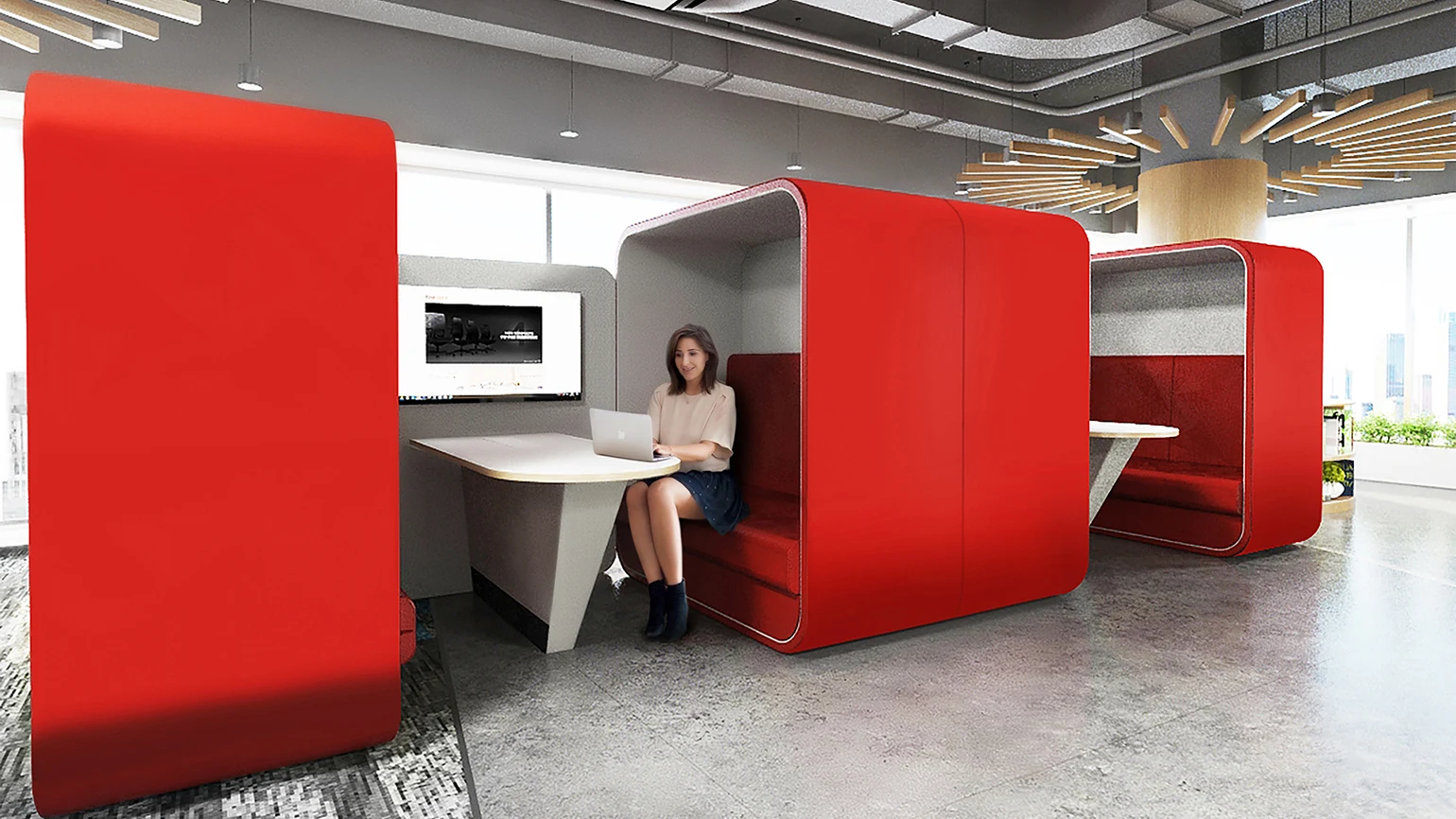Premium Ergonomic Chair vs. Standard Office Chair: Which Is the Smarter Choice?
One of the most decisive factors affecting employee productivity and health is the chair they sit on every day. While many businesses still use standard office chairs with basic designs, the global trend is shifting toward the ergonomic chair, the ultimate solution for health, efficiency, and professional image.
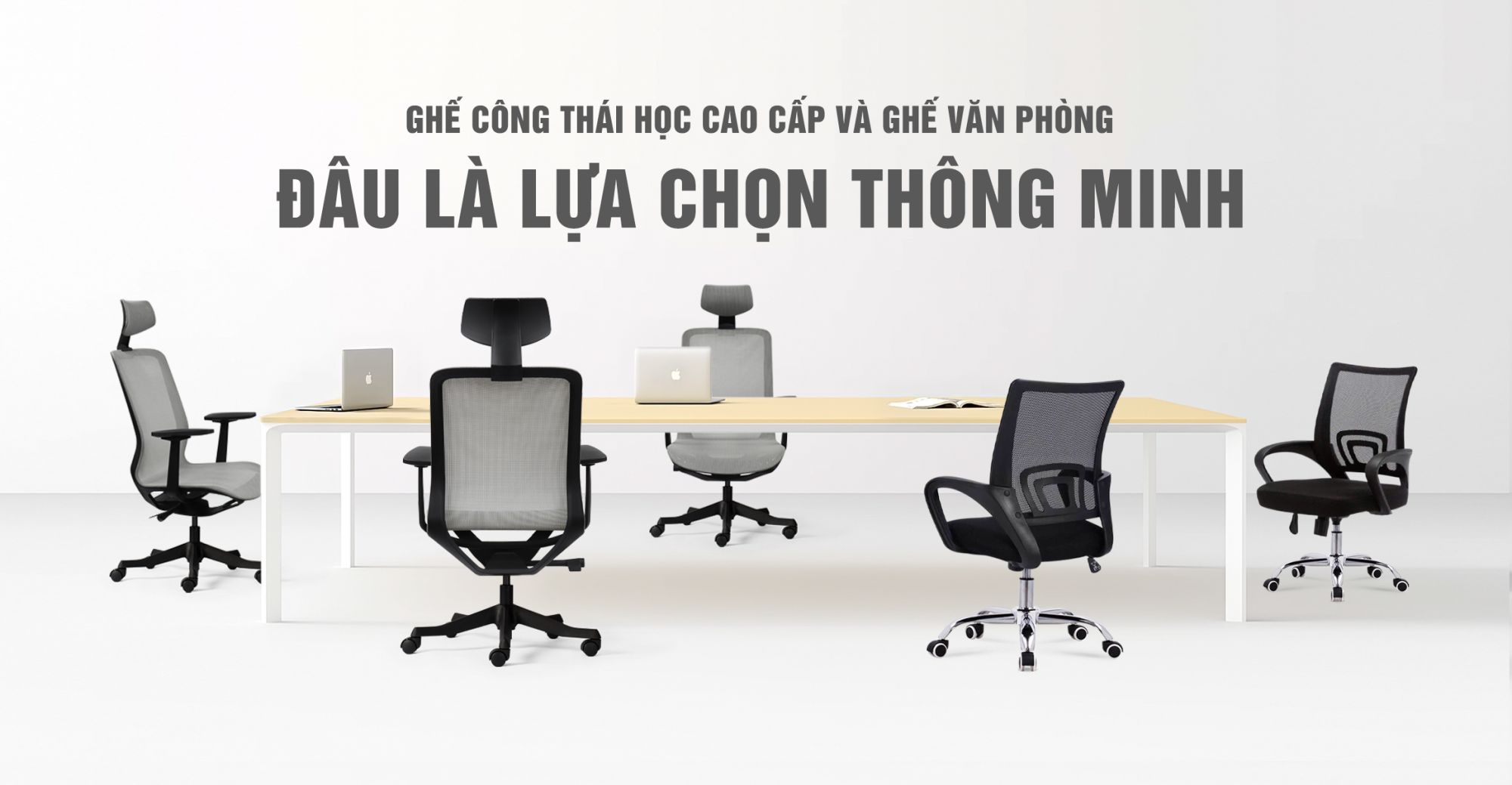
Why Should Businesses Care About Office Chairs?
Put yourself in the shoes of a purchasing director, HR manager, or office administrator: the cost of chairs is not just an interior investment, it’s directly linked to medical expenses, employee satisfaction, and long-term work performance.
In this article, we’ll analyze in detail and provide a comprehensive comparison between premium ergonomic chairs and standard office chairs, helping you make the right decision for your business.
What Is an Ergonomic Chair?
An ergonomic chair is designed based on ergonomic science, focusing on:
-
Supporting the body with proper posture.
-
Reducing pressure on the spine, neck, shoulders, and hips.
-
Optimizing comfort for long sitting hours.
The biggest difference compared to a regular office chair is adjustability: an ergonomic office chair allows users to customize multiple parts (backrest, height, headrest, armrests, seat cushion, etc.) to fit their body shape and work habits.
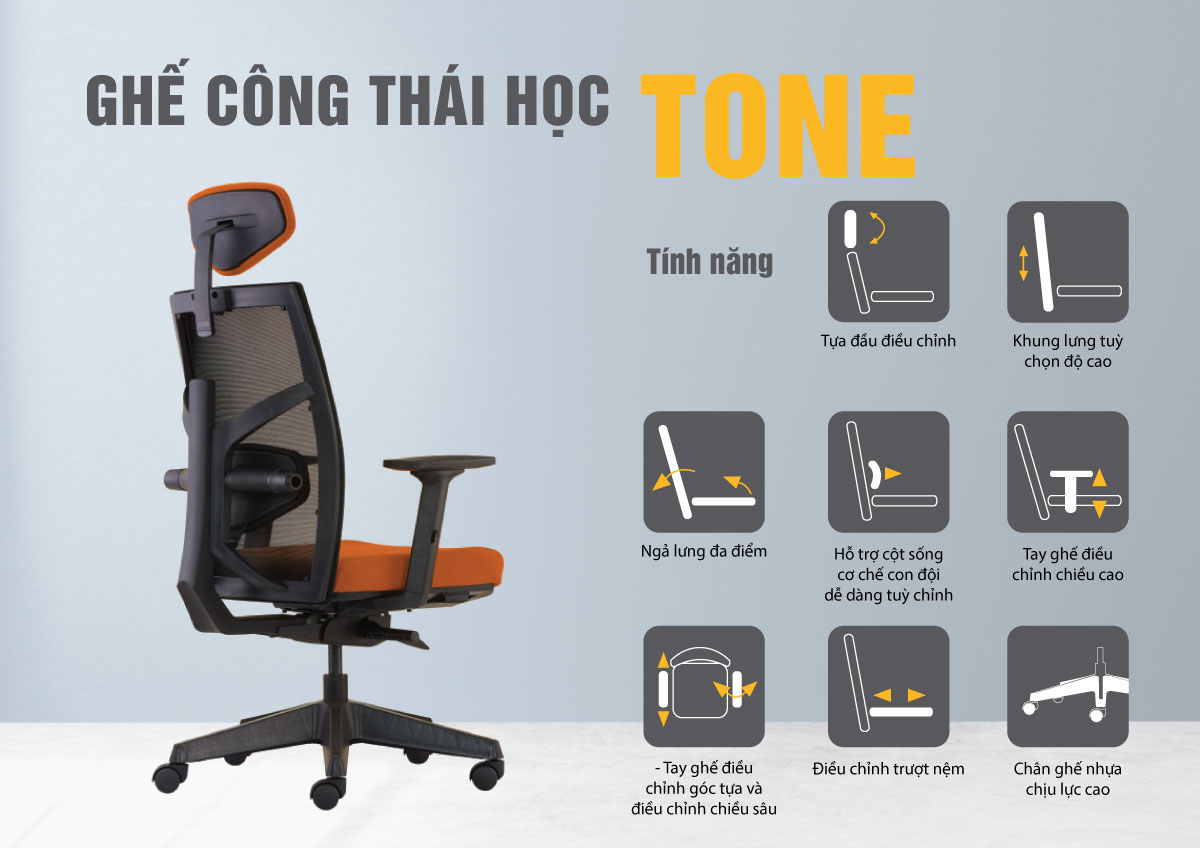
Standard Office Chairs: Limitations & Risks
A regular office chair usually comes with only basic functions:
-
Fixed or limited height adjustment.
-
Short backrest with little to no spinal support.
-
Thin cushion that flattens quickly.
-
Non-adjustable or rigid armrests.
The problem is: with office workers sitting 6–8 hours a day, these chairs can easily lead to:
-
Back pain and spinal issues.
-
Neck and shoulder strain, office syndrome.
-
Reduced focus and low productivity.
-
Higher costs due to sick leaves and insurance claims.
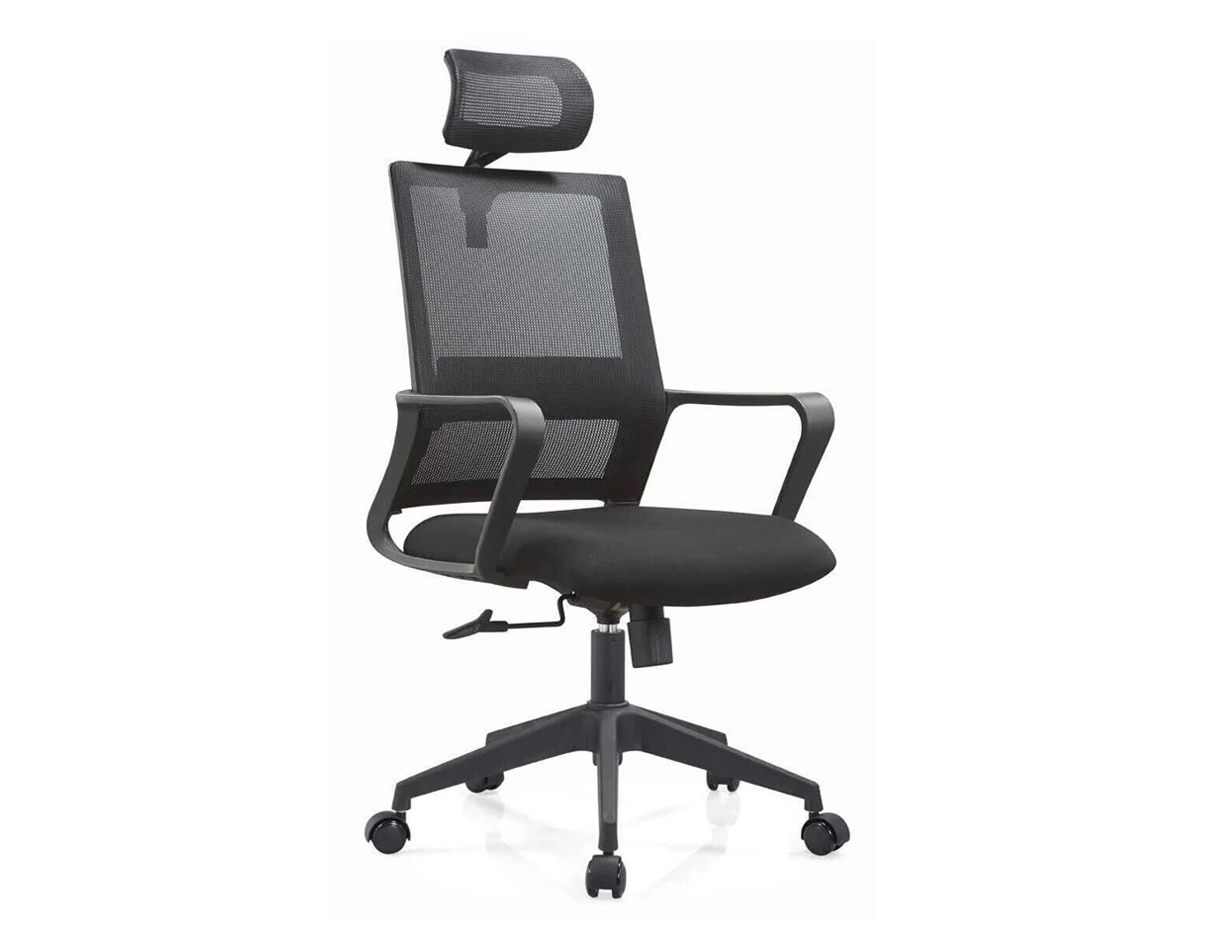
Detailed Comparison: Ergonomic Chair vs. Standard Office Chair
Long-Term Benefits of Investing in Ergonomic Chairs
An ergonomic office chair is not just a chair, it’s a strategic investment:
-
Talent retention: Employees feel valued when their company invests in their health.
-
Lower medical costs: Fewer spine and posture-related health issues → reduced insurance and sick leave.
-
Boosted productivity: Comfort leads to focus, creativity, and efficiency.
-
Enhanced brand image: A modern office with premium ergonomic chairs leaves a strong impression on partners and clients.
The Hidden Costs of Sticking With Standard Chairs
-
Frequent employee complaints about discomfort lower morale.
-
Higher turnover due to an unsupportive work environment.
-
Ongoing replacement costs often exceed initial savings.
-
Unprofessional office image, damaging client and partner trust.
Case Study: An FDI Tech Company Upgrades to Ergonomic Chairs
A foreign-invested tech firm in Hanoi replaced 300 standard chairs with premium ergonomic office chairs. After 6 months:
-
70% of employees reported less back and neck pain.
-
Productivity increased by 15% thanks to better concentration.
-
Sick leave dropped by 20%.
-
The office became a highlight when hosting international partners.
How Should Businesses Choose the Right Ergonomic Chair?
When selecting, consider:
-
Features: Headrest, lumbar support, 3D/4D armrests, reclining flexibility.
-
Materials: Breathable mesh, sturdy aluminum frame.
-
Warranty: Minimum 3–5 years.
-
Trusted brands: Ensure both quality and after-sales service.
Conclusion: From Standard to Ergonomic, A Worthy Upgrade
In today’s competitive labor market and modern work culture, ergonomic chairs are no longer a luxury but a necessary standard for businesses to demonstrate professionalism and care for employees.
If you’re a purchasing director, HR manager, or office admin, view this as a strategic investment: one ergonomic office chair today means better health, productivity, and employee loyalty for years to come.

